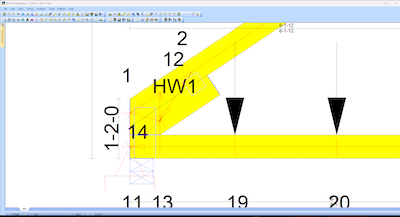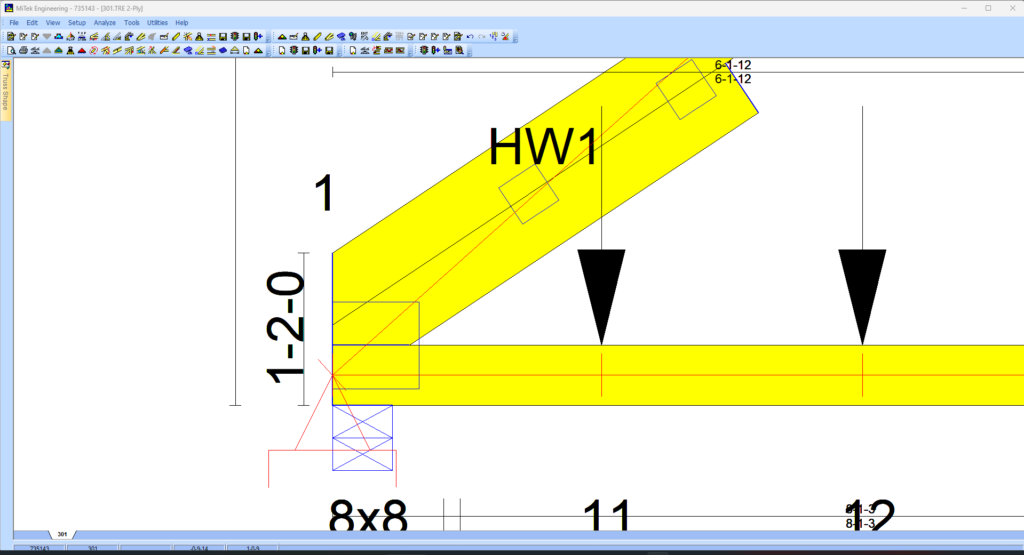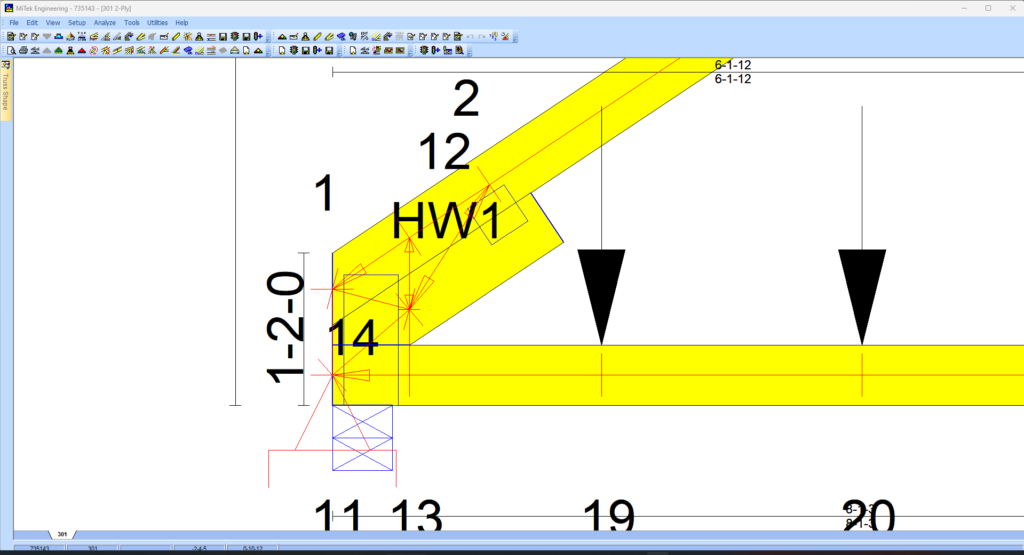
Heel Analysis
ARCHITECTURE
Heel Analysis Methods.
When I design heels for a truss, I try to not use more wood than I need. Throwing wood at a problem doesn’t always fix things. For example, I have a slider on this heel as the heels are high. The top chord doesn’t specifically need them for stability or deflection. I have a pinned bearing and I can analyze the heel with a few different methods. In these two illustrations the red line represents the analog of the truss.

I analyze with a single analog on the heel and my slider is several feet long as the next joint is the web.

In the right most illustration I analyze with a matrix which checks several points over the heel and shorter analog lengths and a much shorter slider for the heel.

Analyzing with a matrix doesn’t always work and may make things worse in certain cases. I wanted to share but one of the many tools I use on a daily basis.
The amount of wood saved accumulates quickly. Saving a few feet of lumber on each truss when I send out hundreds per day adds up. Save a tree, save a dollar, save a plate, save the planet, save the whales, save the rainforests.
– Vandelay Industries

